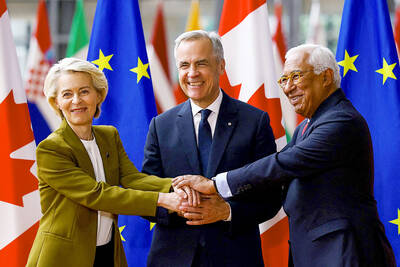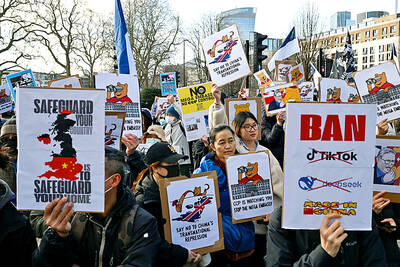The Chinese government systematically dismantled CIA spying operations in the nation starting in 2010, killing or imprisoning more than a dozen sources over two years and crippling intelligence gathering there for years afterward.
Current and former US officials described the intelligence breach as one of the worst in decades.
It set off a scramble in Washington’s intelligence and law enforcement agencies to contain the fallout, but investigators were bitterly divided over the cause. Some were convinced that a mole within the CIA had betrayed the US.
Others believed that the Chinese had hacked the covert system the CIA used to communicate with its foreign sources. Years later, that debate remains unresolved.
However, there was no disagreement about the damage. From the final weeks of 2010 through the end of 2012, according to former US officials, the Chinese killed at least a dozen of the CIA’s sources.
According to three of the officials, one was shot in front of his colleagues in the courtyard of a government building — a message to others who might have been working for the CIA.
Others were put in jail. All told, the Chinese killed or imprisoned 18 to 20 of the CIA’s sources in China, according to two former senior US officials, effectively unraveling a network that took years to build.
Assessing the fallout from an exposed spy operation can be difficult, but the episode was considered particularly damaging.
The number of US assets lost in China, officials said, rivaled those lost in the former Soviet Union and Russia during the betrayals of Aldrich Ames and Robert Hanssen, formerly of the CIA and the FBI respectively, who divulged intelligence operations to Moscow for years.
The previously unreported episode shows how successful the Chinese were in disrupting US spying efforts and stealing secrets years before a well-publicized breach in 2015 gave Beijing access to thousands of government personnel records, including intelligence contractors.
The CIA considers spying in China one of its top priorities, but the nation’s extensive security apparatus makes it exceptionally hard for Western spy services to develop sources there.
At a time when the CIA is trying to figure out how some of its most sensitive documents were leaked onto the Internet two months ago by WikiLeaks and the FBI investigates possible ties between US President Donald Trump’s campaign and Russia, the unsettled nature of the China investigation demonstrates the difficulty of conducting counterespionage investigations into sophisticated spy services such as those in Russia and China.
The CIA and the FBI both declined to comment.
Details about the investigation have been tightly held.
Ten current and former US officials described the investigation on the condition of anonymity because they did not want to be identified discussing the information.
The first signs of trouble emerged in 2010. At the time, the quality of the CIA’s information about the inner workings of the Chinese government was the best it had been for years, the result of recruiting sources deep inside the bureaucracy in Beijing, four former officials said.
Some were Chinese citizens who the CIA believed had become disillusioned with the Chinese government’s corruption.
However, by the end of the year, the flow of information began to dry up. By early 2011, senior agency officers realized they had a problem: Assets in China, one of their most precious resources, were disappearing.
The FBI and the CIA opened a joint investigation run by top counterintelligence officials at both agencies. Working out of a secret office in northern Virginia, they began analyzing every operation being run in Beijing.
One former senior US official said the investigation had been code-named Honey Badger.
As more and more sources vanished, the operation took on increased urgency. Nearly every employee at the US embassy was scrutinized, no matter how high they ranked.
Some investigators believed the Chinese had cracked the encrypted method that the CIA used to communicate with its assets. Others suspected a traitor in the CIA, a theory that agency officials were at first reluctant to embrace — and that some in both agencies still do not believe.
Their debates were punctuated with macabre telephone calls — “We lost another one” — and urgent questions from former US president Barack Obama’s administration wondering why intelligence about the Chinese had slowed.
The mole hunt eventually zeroed in on a former agency operative who had worked in the CIA’s division overseeing China, believing he was most likely responsible for the crippling disclosures.
However, efforts to gather enough evidence to arrest him failed and he is now living in another Asian nation, current and former officials said.
There was good reason to suspect an insider, some former officials said.
About that time, Chinese spies compromised US National Security Agency surveillance in Taiwan by infiltrating Taiwanese intelligence, two former officials said.
The CIA had also discovered Chinese operatives in the agency’s hiring pipeline, according to officials and court documents.
However, the CIA’s top spy hunter, Mark Kelton, resisted the mole theory, at least initially, former officials said.
Kelton had been close friends with Brian Kelley, a CIA officer who in the 1990s was wrongly suspected by the FBI of being a Russian spy. The real traitor, it turned out, was Hanssen.
Kelton often mentioned Kelley’s mistreatment in meetings during the China episode, former colleagues said, adding that he would not accuse someone without ironclad evidence.
Those who rejected the mole theory attributed the losses to sloppy US tradecraft at a time when the Chinese were becoming better at monitoring US espionage activities in the nation.
Some FBI agents became convinced that CIA handlers in Beijing too often traveled the same routes to the same meeting points, which would have helped China’s vast surveillance network identify the spies in its midst.
Some officers met their sources at a restaurant where Chinese agents had planted listening devices, former officials said, adding that even the waiters worked for Chinese intelligence.
This carelessness, coupled with the possibility that the Chinese had hacked the covert communications channel, would explain many, if not all, of the disappearances and deaths, some former officials said.
Some in the agency, particularly those who had helped build the spy network, resisted this theory and believed they had been caught in the middle of a turf war within the CIA.
By 2013, the FBI and the CIA concluded that China’s success in identifying CIA agents had been blunted — it is not clear how — but the damage had been done.
The CIA has tried to rebuild its network of spies in China, officials said, an expensive and time-consuming effort led at one time by the former chief of the East Asia Division.
A former intelligence official said the former chief was particularly bitter because he had worked with the suspected mole and recruited some of the spies in China who were ultimately executed.

The team behind the long-awaited Vera Rubin Observatory in Chile yesterday published their first images, revealing breathtaking views of star-forming regions as well as distant galaxies. More than two decades in the making, the giant US-funded telescope sits perched at the summit of Cerro Pachon in central Chile, where dark skies and dry air provide ideal conditions for observing the cosmos. One of the debut images is a composite of 678 exposures taken over just seven hours, capturing the Trifid Nebula and the Lagoon Nebula — both several thousand light-years from Earth — glowing in vivid pinks against orange-red backdrops. The new image

Canada and the EU on Monday signed a defense and security pact as the transatlantic partners seek to better confront Russia, with worries over Washington’s reliability under US President Donald Trump. The deal was announced after a summit in Brussels between Canadian Prime Minister Mark Carney and European Commission President Ursula von der Leyen and European Council President Antonio Costa. “While NATO remains the cornerstone of our collective defense, this partnership will allow us to strengthen our preparedness ... to invest more and to invest smarter,” Costa told a news conference. “It opens new opportunities for companies on both sides of the

ESPIONAGE: The British government’s decision on the proposed embassy hinges on the security of underground data cables, a former diplomat has said A US intervention over China’s proposed new embassy in London has thrown a potential resolution “up in the air,” campaigners have said, amid concerns over the site’s proximity to a sensitive hub of critical communication cables. The furor over a new “super-embassy” on the edge of London’s financial district was reignited last week when the White House said it was “deeply concerned” over potential Chinese access to “the sensitive communications of one of our closest allies.” The Dutch parliament has also raised concerns about Beijing’s ideal location of Royal Mint Court, on the edge of the City of London, which has so

OVERHAUL: The move would likely mark the end to Voice of America, which was founded in 1942 to counter Nazi propaganda and operated in nearly 50 languages The parent agency of Voice of America (VOA) on Friday said it had issued termination notices to more than 639 more staff, completing an 85 percent decrease in personnel since March and effectively spelling the end of a broadcasting network founded to counter Nazi propaganda. US Agency for Global Media (USAGM) senior advisor Kari Lake said the staff reduction meant 1,400 positions had been eliminated as part of US President Donald Trump’s agenda to cut staffing at the agency to a statutory minimum. “Reduction in Force Termination Notices were sent to 639 employees at USAGM and Voice of America, part of a